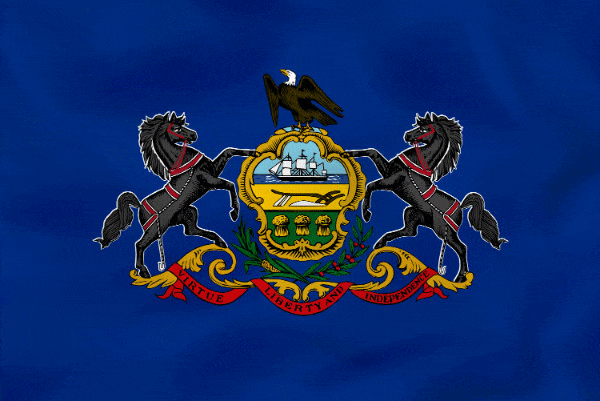 History Rich in historic lore, Pennsylvania territory was disputed in the early 1600s among the Dutch, the Swedes, and the English. England acquired the region in 1664 with the capture of New York, and in 1681 Pennsylvania was granted to William Penn, a Quaker, by King Charles II. Philadelphia was the seat of the federal government almost continuously from 1776 to 1800; there the Declaration of Independence was signed in 1776 and the U.S. Constitution drawn up in 1787. Valley Forge, of Revolutionary War fame, and Gettysburg, site of the pivotal battle of the Civil War, are both in Pennsylvania. The Liberty Bell is located in a glass pavilion across from Independence Hall in Philadelphia. The nation's first oil well was dug at Titusville in 1859, and the mining of iron ore and coal led to the development of the state's steel industry. More recently Pennsylvania's industry has diversified, although the state still leads the country in the production of specialty steel. The service, retail trade, and manufacturing sectors provide the most jobs; Pennsylvania is a leader in the production of chemicals and pharmaceuticals, food products, and electronic equipment. Pennsylvania's 58,000 farms (occupying nearly 8 million acres) are the backbone of the state's economy, producing a wide variety of crops. Leading commodities are dairy products, cattle and calves, mushrooms, greenhouse and nursery products, poultry and eggs, a variety of fruits, sweet corn, potatoes, maple syrup, and Christmas trees. Pennsylvania's rich heritage draws billions of tourist dollars annually. Among the chief attractions are the Gettysburg National Military Park, Valley Forge National Historical Park, Independence National Historical Park in Philadelphia, the Pennsylvania Dutch region, the Eisenhower farm near Gettysburg, and the Delaware Water Gap National Recreation Area.
|
Pennsylvania
Read this profile of Pennsylvania to learn about the state's history, points of interest, and government. Also find interesting facts about each state, including the state's motto, symbols, and when it entered the union.





